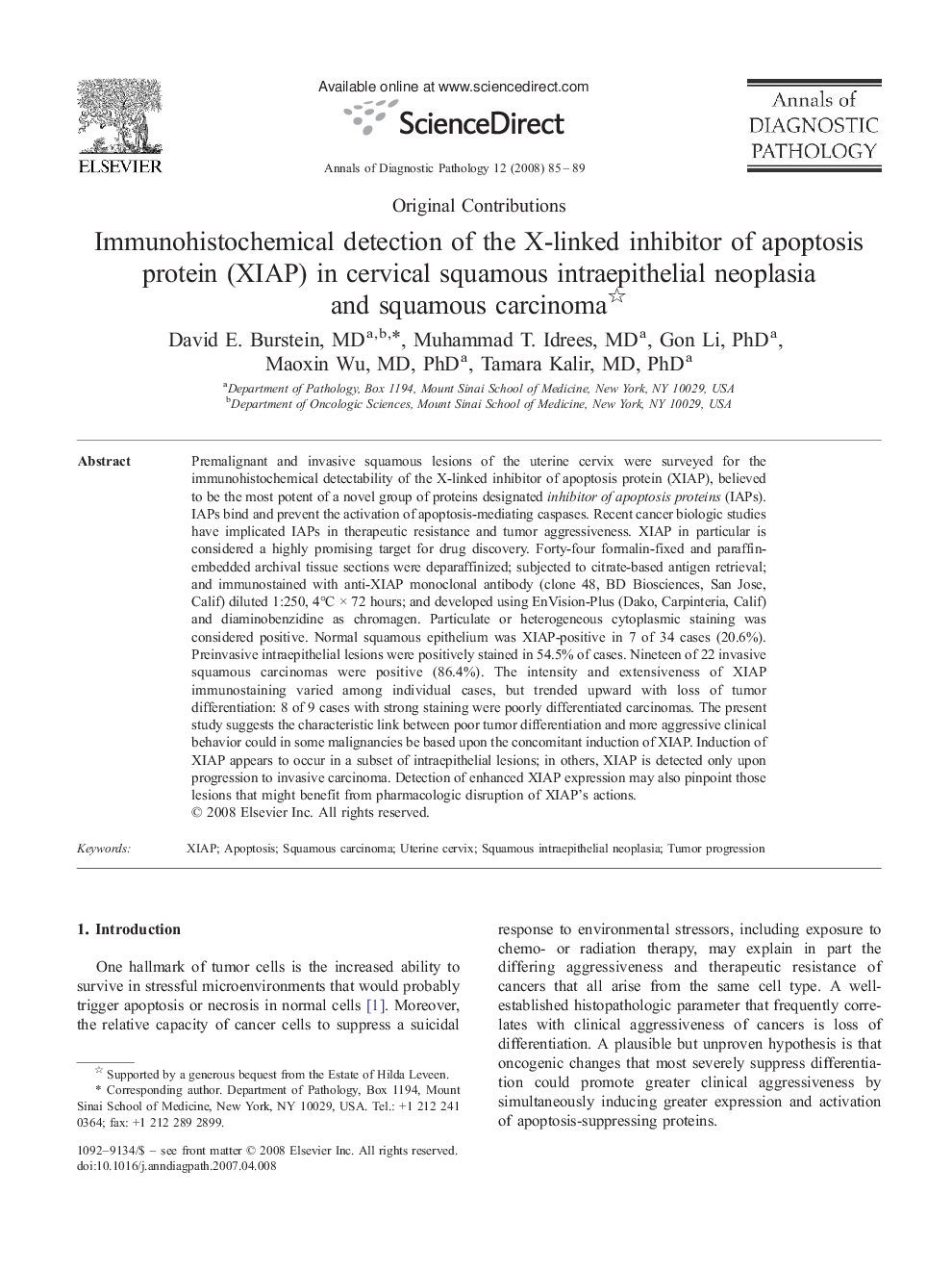| Article ID | Journal | Published Year | Pages | File Type |
|---|---|---|---|---|
| 4130675 | Annals of Diagnostic Pathology | 2008 | 5 Pages |
Premalignant and invasive squamous lesions of the uterine cervix were surveyed for the immunohistochemical detectability of the X-linked inhibitor of apoptosis protein (XIAP), believed to be the most potent of a novel group of proteins designated inhibitor of apoptosis proteins (IAPs). IAPs bind and prevent the activation of apoptosis-mediating caspases. Recent cancer biologic studies have implicated IAPs in therapeutic resistance and tumor aggressiveness. XIAP in particular is considered a highly promising target for drug discovery. Forty-four formalin-fixed and paraffin-embedded archival tissue sections were deparaffinized; subjected to citrate-based antigen retrieval; and immunostained with anti-XIAP monoclonal antibody (clone 48, BD Biosciences, San Jose, Calif) diluted 1:250, 4°C × 72 hours; and developed using EnVision-Plus (Dako, Carpinteria, Calif) and diaminobenzidine as chromagen. Particulate or heterogeneous cytoplasmic staining was considered positive. Normal squamous epithelium was XIAP-positive in 7 of 34 cases (20.6%). Preinvasive intraepithelial lesions were positively stained in 54.5% of cases. Nineteen of 22 invasive squamous carcinomas were positive (86.4%). The intensity and extensiveness of XIAP immunostaining varied among individual cases, but trended upward with loss of tumor differentiation: 8 of 9 cases with strong staining were poorly differentiated carcinomas. The present study suggests the characteristic link between poor tumor differentiation and more aggressive clinical behavior could in some malignancies be based upon the concomitant induction of XIAP. Induction of XIAP appears to occur in a subset of intraepithelial lesions; in others, XIAP is detected only upon progression to invasive carcinoma. Detection of enhanced XIAP expression may also pinpoint those lesions that might benefit from pharmacologic disruption of XIAP's actions.
